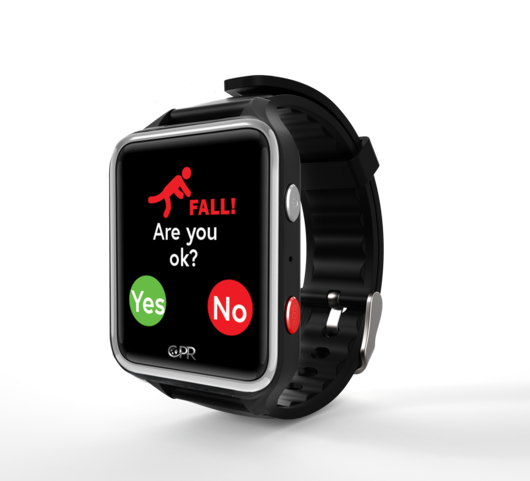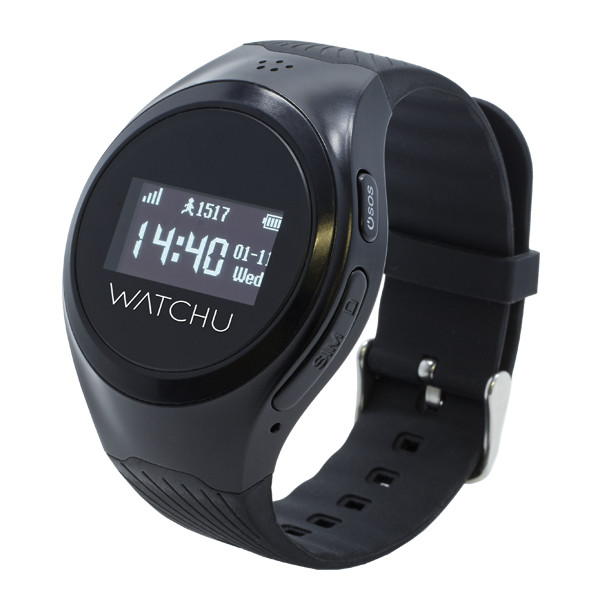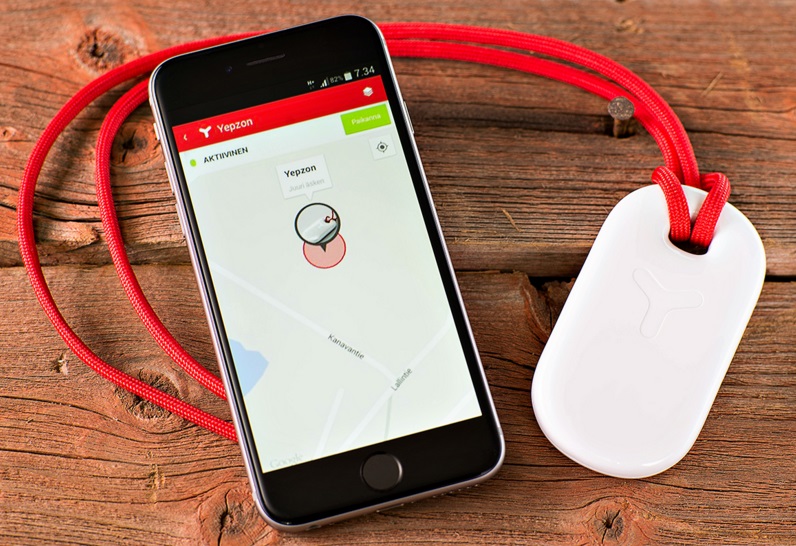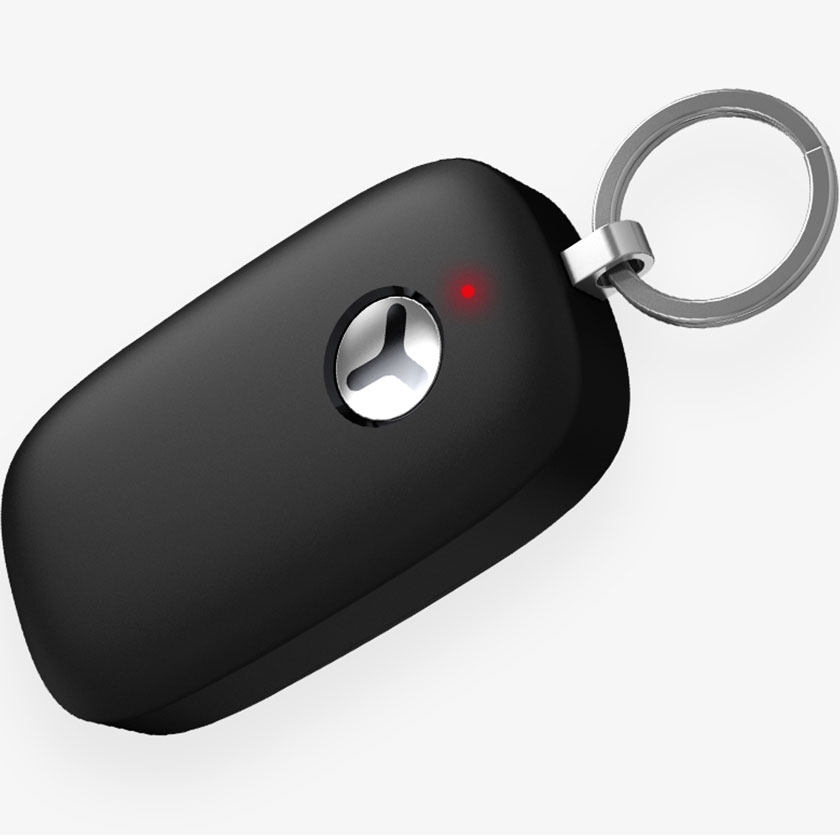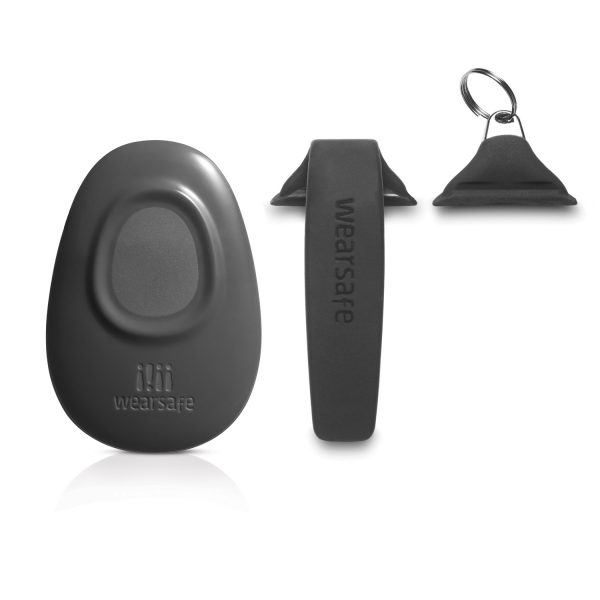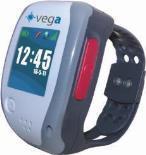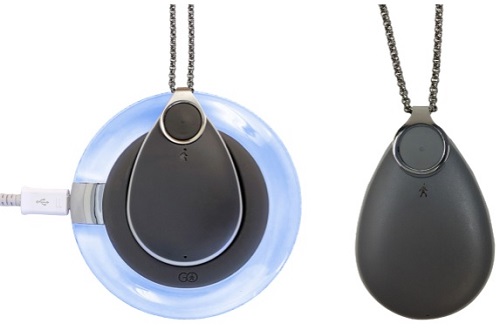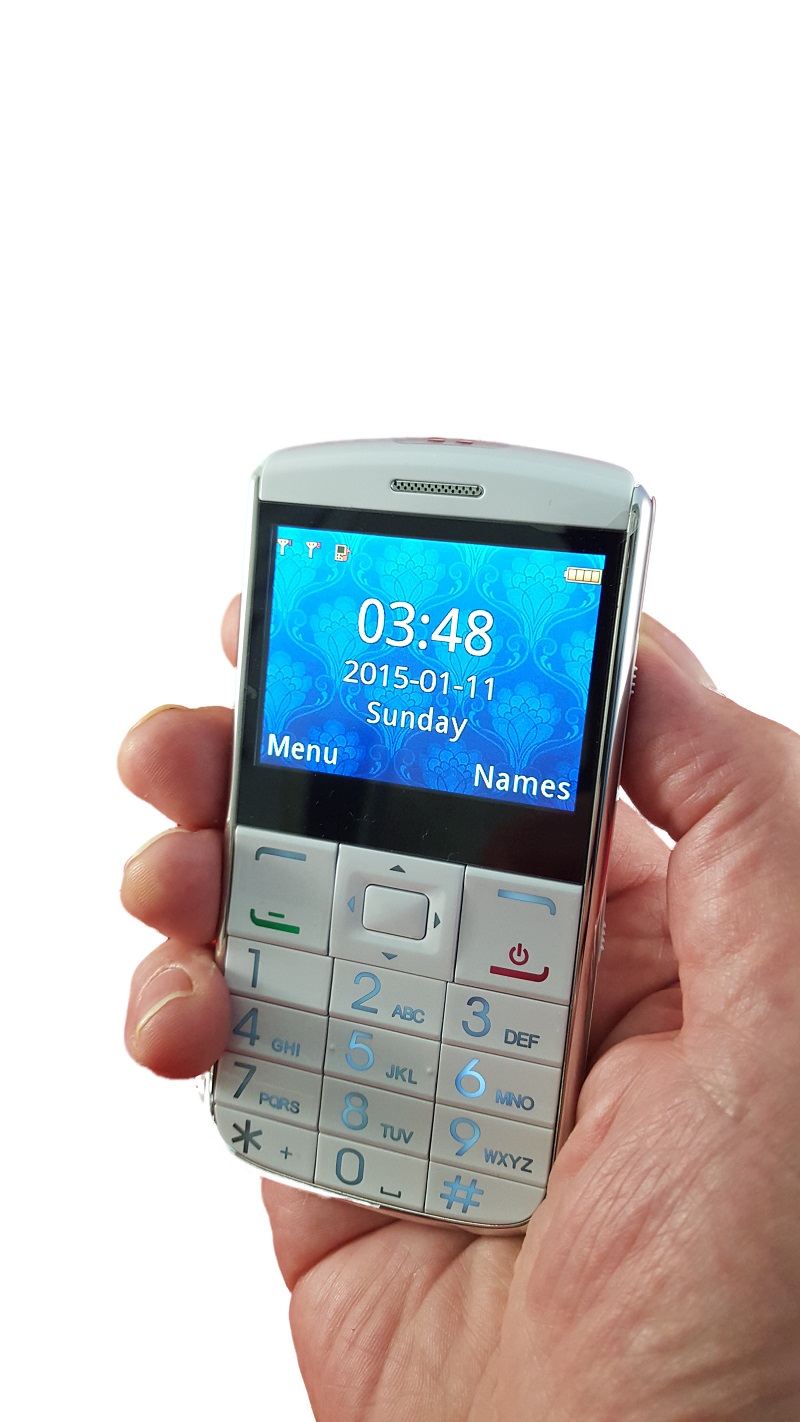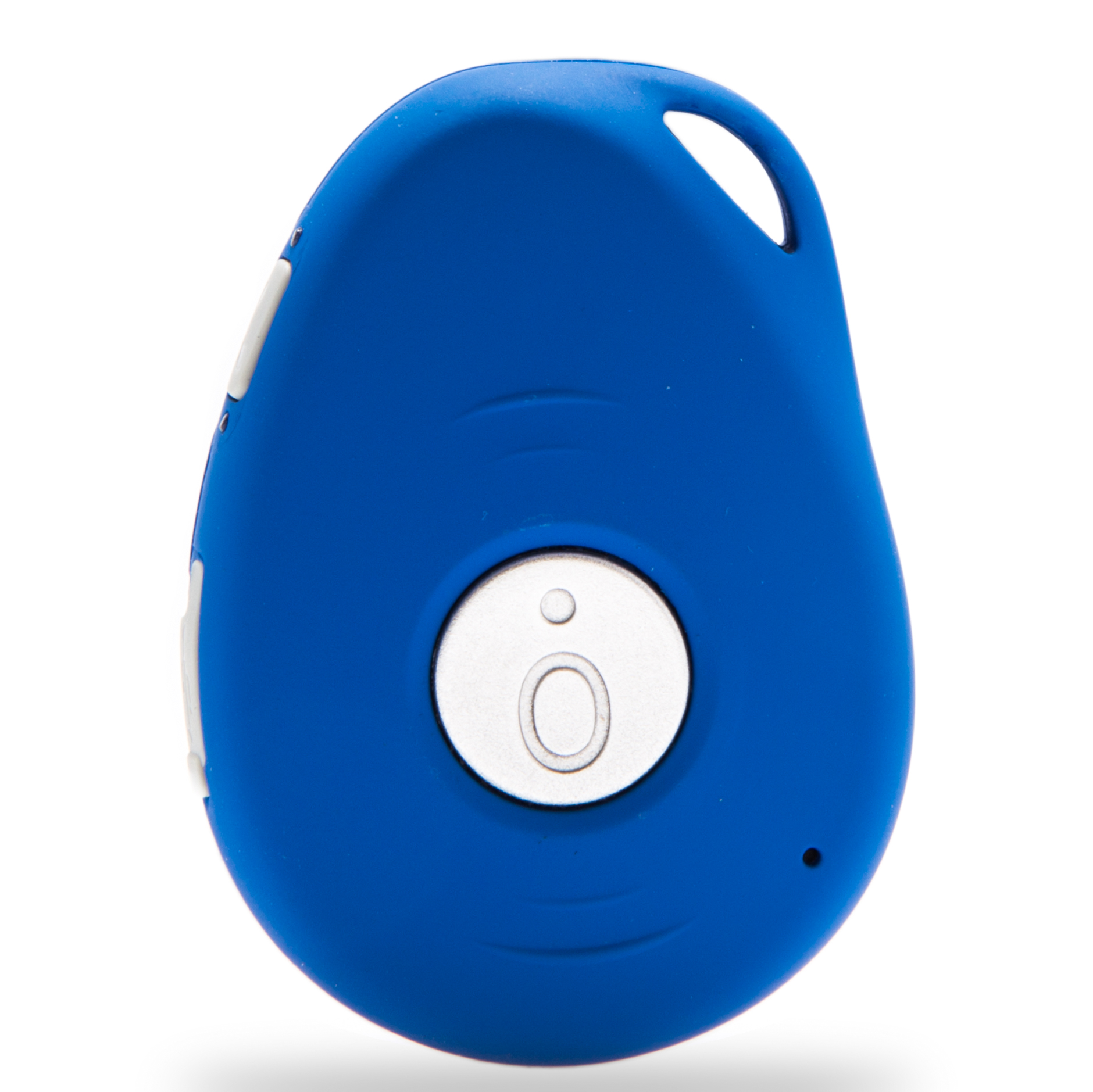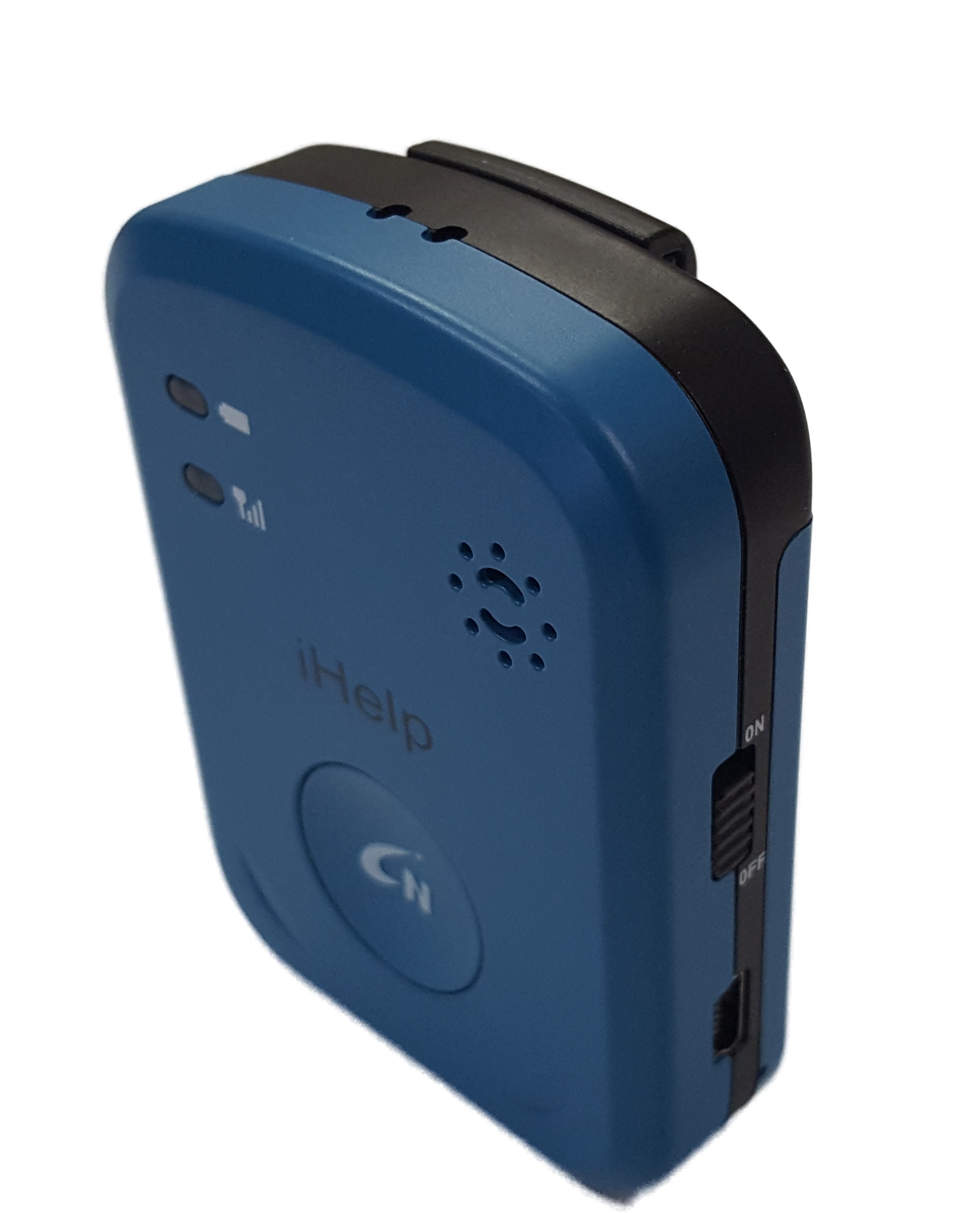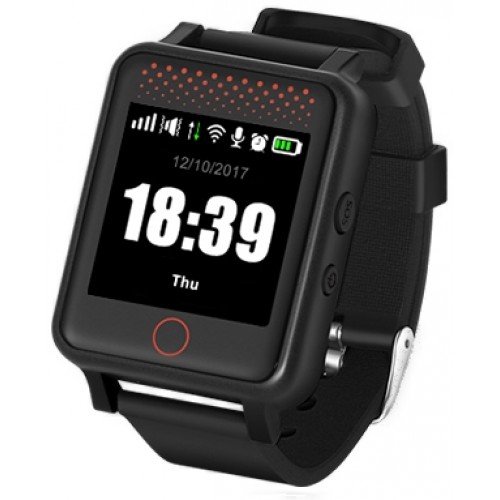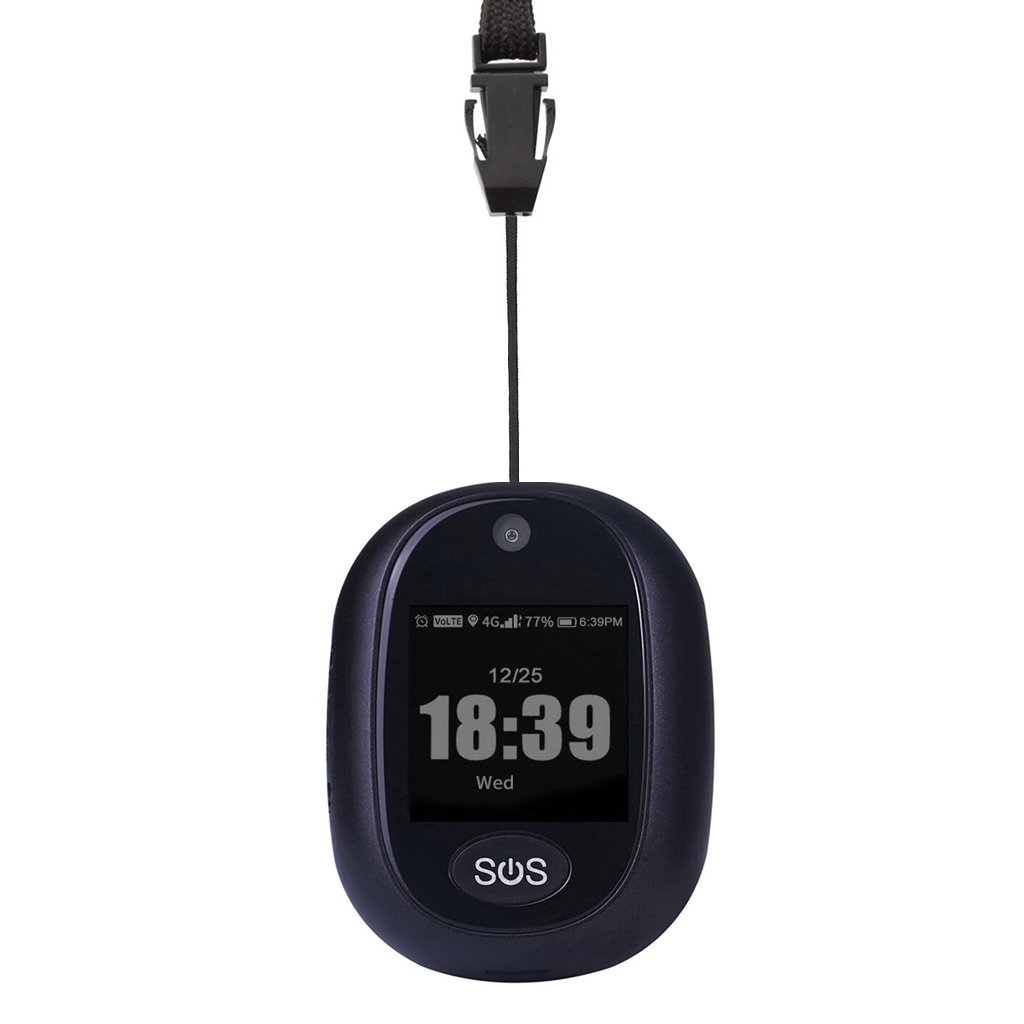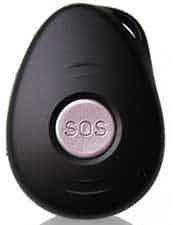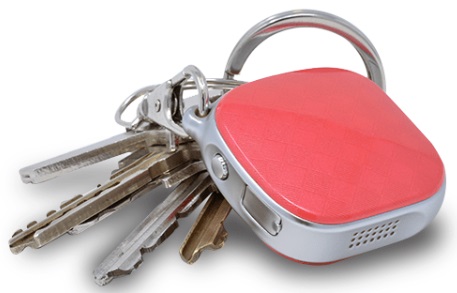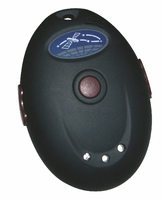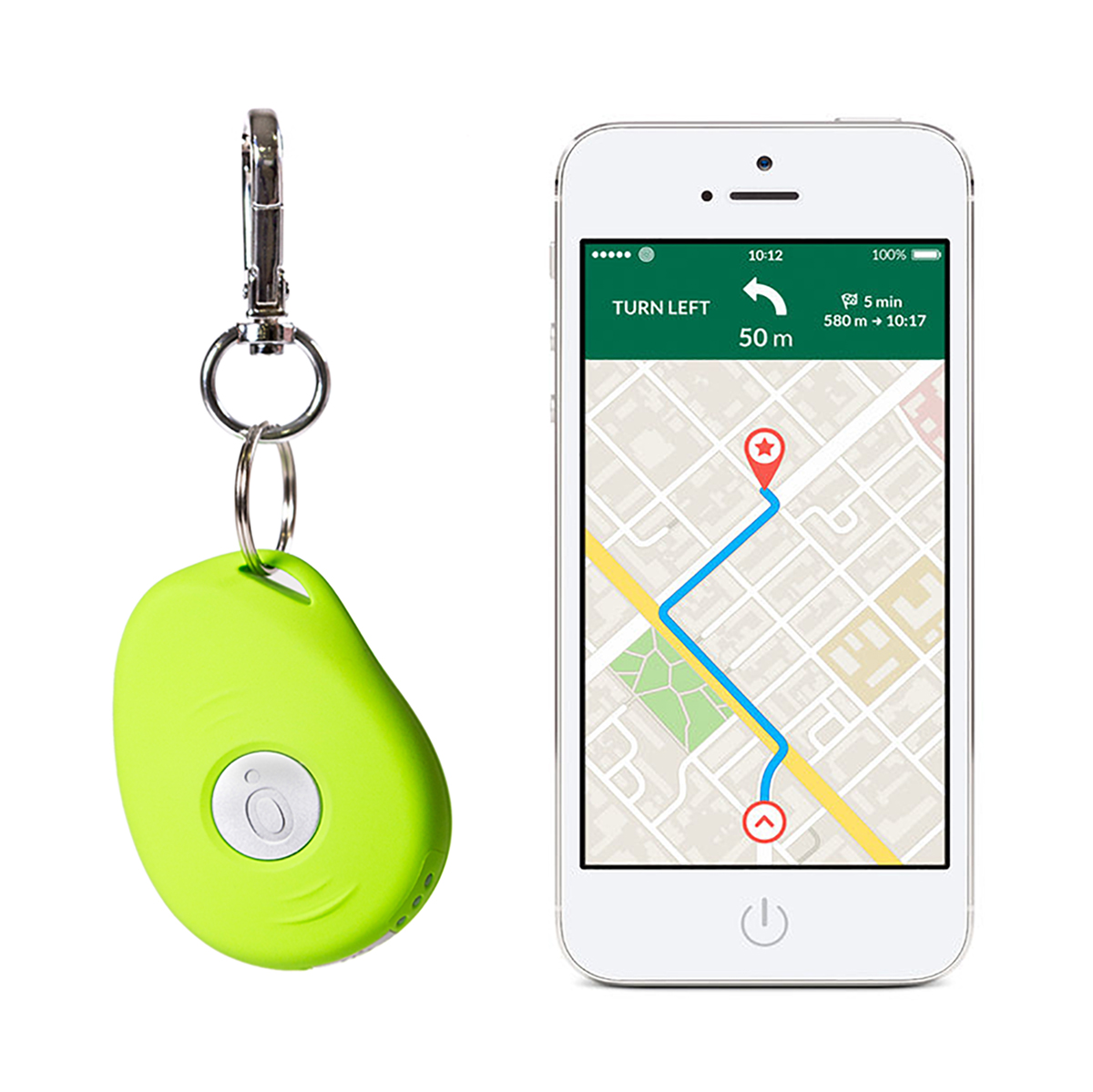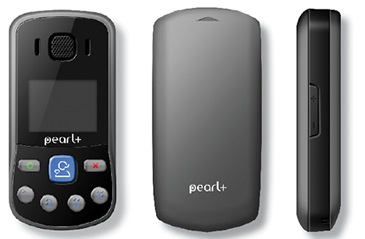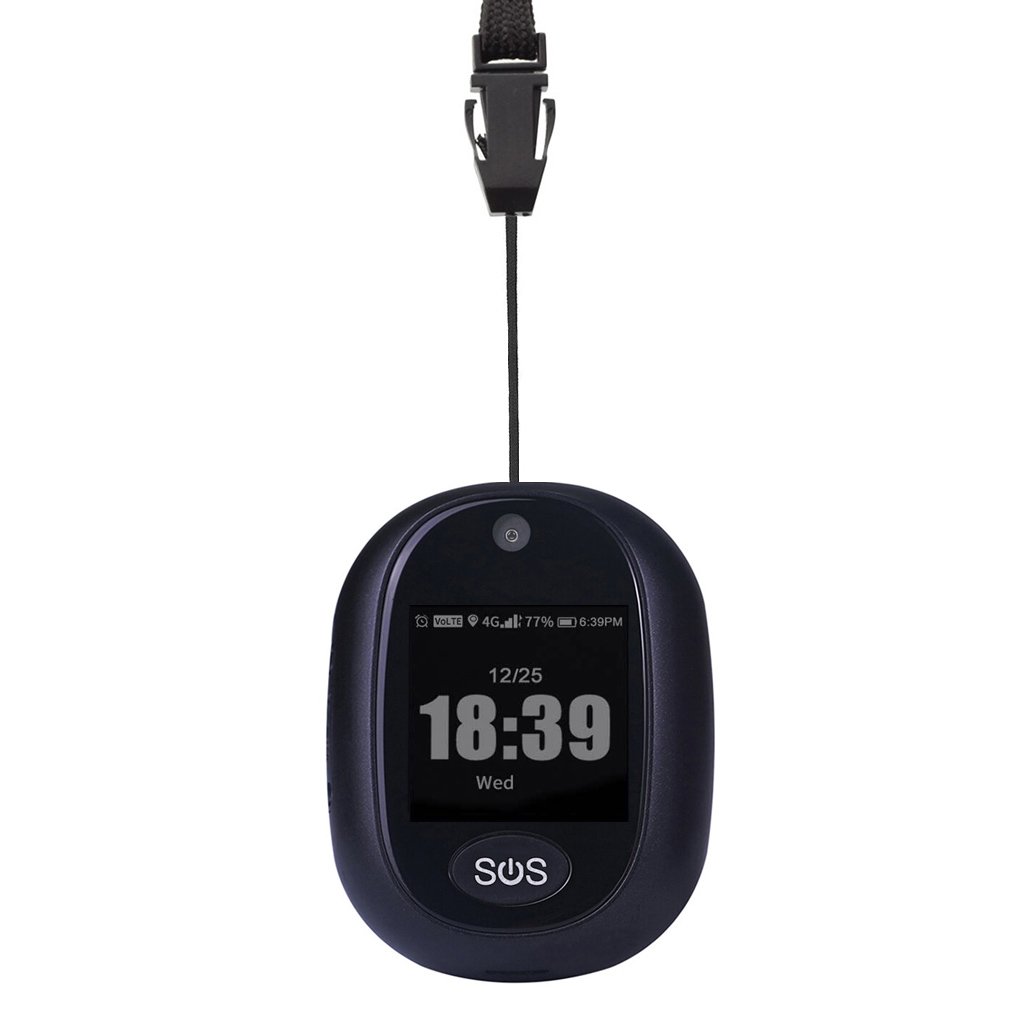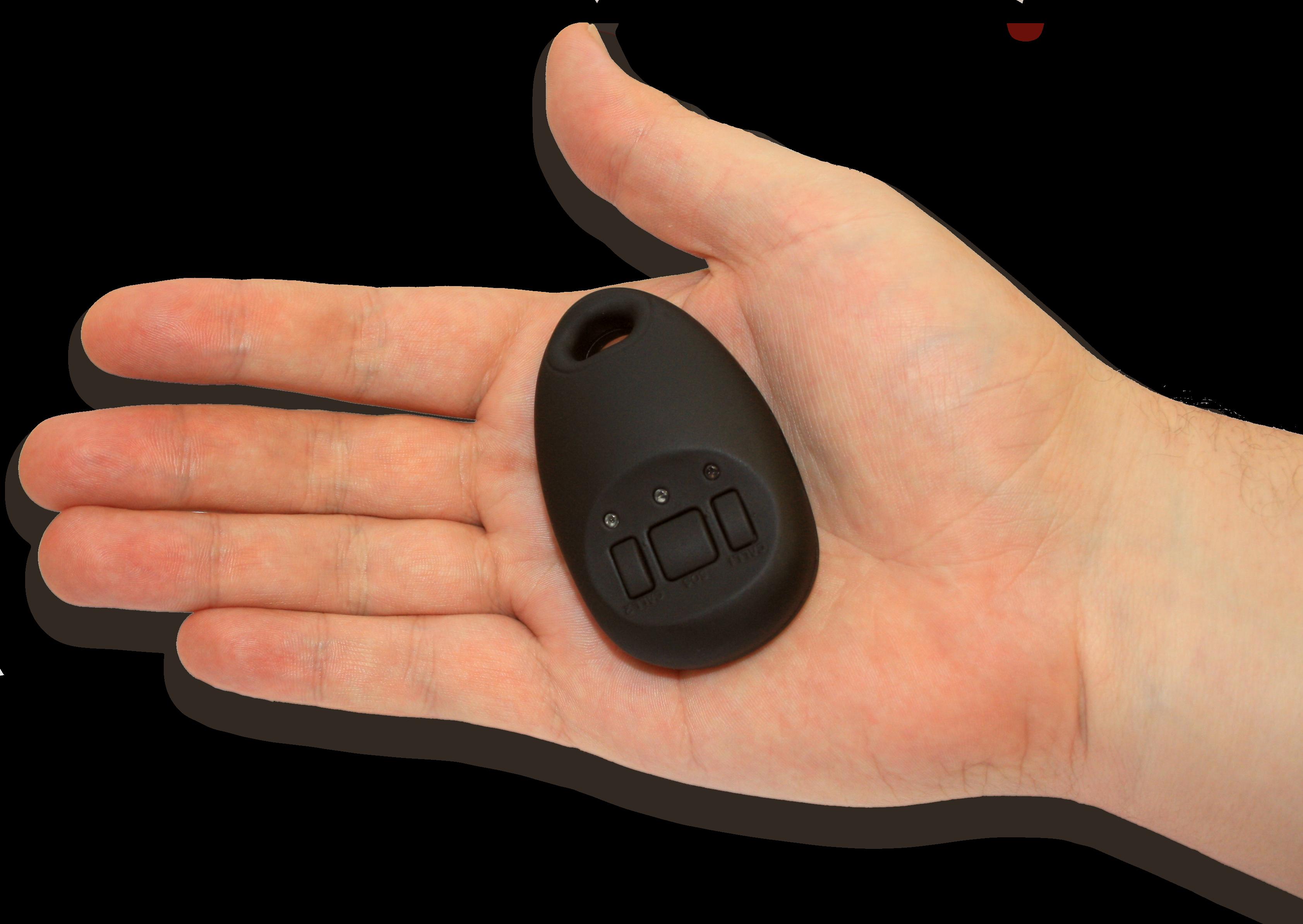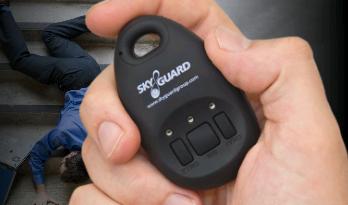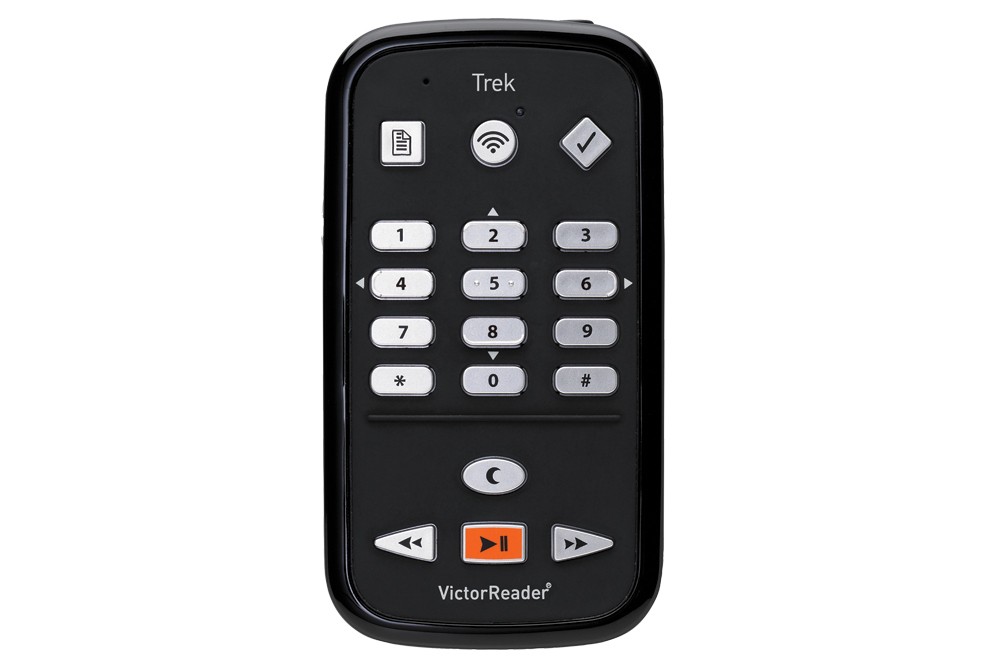Personal location when outside
This section includes equipment to assist with navigation when not at home.
Some equipment is designed to help users who are blind or partially sighted, including talking GPS units and ultrasonic obstacle detectors which vibrate when an obstacle is detected.
Personal locators are portable devices that are carried by a person when they are out. Authorised individuals such as relatives or carers are able to find out the person’s location by logging onto the internet from a computer.
Mobile alarms can be used to call for help when inside or outside the home. They are connected to a monitoring centre which can find the location of the alarm unit. This equipment is therefore useful if the person sometimes becomes disorientated or confused and may become lost after going out.
Introduction
There are times when many of us momentarily lose track of which day it is. However, if a person is losing track of the days and missing appointments, or not paying bills on time, this is an indication of a significant problem with their memory. There may be other signs such as forgetting names of people in everyday contact, regularly losing items where this was not a problem in the past, or a significant loss of weight. These things can be very frustrating and cause anxiety.
If you feel that this is a problem or the situation is getting worse, contact your GP, particularly if there are feelings of agitation, anxiety or extreme irritability. A GP can offer treatment advice, information and/or referral to other services depending upon your wishes and circumstances. You can search for your nearest GP on the NHS website.
Provision of equipment
Most local authorities have a community equipment service which is used by both health and social services. Equipment is generally issued based on an assessment of your need. There may also be eligibility criteria. For simple bits of equipment you may be interviewed over the telephone. For more complex equipment an assessor will need to visit your home. They may ask you to try an activity to see how and why you are finding it difficult. This will indicate to them the most appropriate equipment to meet your needs. The assessor should also be able to provide you with relevant information and advice, or direct you to suitable organisations/services in your area.
Telecare uses technology in the home to monitor and support individuals remotely. This might be a fall alarm, a sensor that monitors the home environment, such as a gas detector, or a personal locator for those for whom disorientation is a problem. They are connected to a central monitoring centre, or a trusted individual, who can respond when needed. Local authorities usually partner with a specialist telecare company to provide a service in their area. Sometimes it is free, sometimes there is an initial cost and/or a weekly charge. Local authorities may meet the cost if you would find this difficult
You may also see the term mCare or mHealth which stands for mobile care/health. This uses mobile phones to access telecare and telehealth.
You will need to contact your local authority and ask for information on their equipment and telecare services. If your local authority assess you as requiring a service they will also complete a financial assessment to assess the level of any contribution you may be required to make.
In many areas a range of the simple aids to daily living may be available on prescription, issued by the assessor. These may include a small range of telecare equipment. If you receive a prescription for one of these items you can take it to a local accredited retailer, which may be a local pharmacy, who will provide you with the item. You can pay extra for an alternative item, so long as it does what the specific item prescribed would do. Your choice may offer extra features, or perhaps you prefer its appearance.
Private purchase
If you decide to buy equipment privately it is best to try and compare the different ranges first. You may have an equipment demonstration centre near you where you can visit to view and try out ranges of equipment. You will receive impartial advice to help choose appropriately. However, not all centres display telecare systems. You will need to contact your nearest centre to find out what they have and to book an appointment.
Be cautious of sales people who try to persuade you to buy equipment that may not meet your needs fully or is over-priced. Buying from a company that belongs to a trade association, such as the British Healthcare Trades Association, may give you some reassurance as members have signed up to a code of practice governing standards of customer service.
Charitable trusts may sometimes provide funding for equipment. There are a number of websites which can help you to search for organisations that give grants, including for equipment and other services.
Planning for a safer home
Before considering high-tech equipment to prompt, warn or trigger alarms, consider simple solutions that may remove risk. Some hazards cannot be anticipated, for example the light bulb blowing when you are walking upstairs. Others are more apparent and it is therefore possible to reduce risk or get rid of the hazard completely. So, for example:
- Remove loose rugs as these are a trip hazard;
- Make sure stairs and passageways are kept clear of clutter and that the stair carpet is securely fixed and isn’t worn;
- Make sure lighting is adequate. Fit long-life light bulbs;
- Look at the layout of furniture – you may be able to create a safer space by rearranging or reducing the furniture in a room;
- Use equipment that is designed to provide support, such as grab rails and walking aids, rather than leaning on fixtures, such as door handles and towel rails;
- Place electrical items near to power points to avoid trailing flex;
- Wear good fitting and sensible footwear.
Finding solutions
Potential solutions should be explored as early as possible, although this is not always easy if the person does not acknowledge or even realise that he or she is experiencing any difficulties. This is particularly relevant when a person has dementia. Introducing change, whether it is in the way things are done or through using equipment, can in itself pose problems for people who are set in their ways or find it hard to learn new tasks. Change has to be at the right time and at the right pace.
Familiarity with an environment contributes towards a person feeling secure and confident. However, over a period of time people often accumulate a lot of clutter that can increase risk. By simplifying and organising your belongings, the home can become a much easier place to live independently. For a start keep regularly used items close to hand and remove items that are no longer used. Keep essential things where they can be seen to act as a visual prompt – for example medication and house keys. Basic tips include:
- Having an organised approach to everyday tasks can help to solve some difficulties of forgetfulness and can reduce energy expenditure so that tasks become more manageable.
- Have a daily routine. Doing things in a regular order everyday, and having set days of the week for less frequent tasks, can help memory.
- Have a central point of reference, for example a notice board or white board, on which a weekly plan can be displayed and where you can post reminders.
- A checklist can be ticked off as a reminder of what has been done, and also gives feedback and reassurance to family and carers.
- Sometimes it helps to do things as you go along, for example keep a ‘running’ shopping list so that as you finish items they are added to the list.
- Avoid getting overtired – you will not function well both in body and mind. There may be times in the day when you can manage better, for example after medication or first thing in the morning.
Ethical implications of equipment
It is necessary to consider any ethical implications before you choose to install some kinds of equipment, particularly equipment or technology which has the potential to limit a person’s choice, freedom or privacy. Telecare can have substantial benefits, and enhance your safety, dignity and independence. However, like any technology there is the potential for it to be misused. There will be pros and cons regarding any potential solution.
The requirements and wishes of everyone involved, particularly the service user and the carer, need to be respected and every effort needs to be made to ensure all parties understand how the equipment and service will work. Particular concerns can include:
- The possible impact of telecare on care services and how it may be used to cut back care services and reduce the time carers spend with service users.
- That technological solutions may be installed without fully involving or obtaining the informed consent of the individual/s involved. This can be particularly relevant when the equipment is used to support individuals with conditions such as dementia.
- That particular types of telecare device, especially those used for monitoring individuals’ movements, may affect the privacy of the individual. Privacy and freedom of movement in our own homes and in public areas are human rights. Thus there are concerns about the balance between risk and protection and about telecare being used to impose conventional lifestyles on people, for example keeping regular bed times.
- That assistive technologies, including telecare, may be used to do tasks an individual is still able to do for themselves. This may contribute to them losing these skills sooner than would otherwise have been the case.
- That the use of computer technologies rely on sharing and storing information. There is a need to ensure such information remains confidential, is not misused or negligently passed into the wrong hands.
- That the devices may make daily activities more complicated or increase an individual's anxieties that they may unintentionally activate the alarm or damage the equipment.
- That the use of telecare equipment may tend to encourage a one-sided focus on an individual’s problems and not on their existing strengths.
There are no uniform 'answers', 'rights' or 'wrongs'. However, it may help to consider the following issues. You can use these points to shape your discussion with the providing company or at an equipment demonstration centre.
- Your personal motivations, perspective and preferences and your involvement in planning the introduction of equipment or changes to existing equipment. Do you understand what the telecare is supposed to do and the options available? Have you agreed that you would like to try the equipment/service?
- The nature of your disability, for example is it progressive, or do your needs fluctuate with 'good' and 'bad' days. How might technology help with this?
- Your living arrangements, family support and the needs of any carer/s. Their perspectives, personal fears, anxieties and agendas may need resolving as may those of any professionals involved.
- The reliability and safety parameters of the telecare equipment.
- Does the situation really call for an equipment or telecare solution? Is there an overreaction to an incident that has only occurred once? Are there alternatives to equipment? Ideally the focus will be on reducing risk, not the person's freedom to make decisions which may involve risks. For example, if an individual is going out and perhaps getting lost or disorientated then one approach may be a telecare door sensor, another approach may be to provide someone to walk with them. If they are going out because they are looking for social contact then this will not be resolved by technological solutions.
- How will the usefulness of the telecare equipment and service be reviewed and evaluated? If you change your mind about having the equipment what will happen?
Day/date and time orientation
Some people have difficulty remembering the day of the week and the time of day, i.e. seven in the morning or seven in the evening, especially in the summer months when there are more daylight hours. Also, confusion can arise in the winter months when the evenings draw in early – it can be dark at 5pm, but it is not bedtime.
Possible solutions include:
- A daily timetable written out by a carer or relative can help by giving structure to the day. It could include, for example, visiting times for carers, meal times, and the time and channel for favourite TV programmes. It could be written on a white board, wiped off and replaced each day.
- A wall clock with clear, bold numbers may help with time orientation. Some also show the day of the week and/or date. Some have a symbol for night or day. Some can simply show the name and relevant part of the of the day.
- Important dates, such as birthdays and doctors appointments, written down at a central point of reference such as a white board.
- A calendar with bold script and a clear space for writing. Days can be ticked off before bedtime.
Prompting devices
Prompting devices are available that play a short pre-recorded message when they sense movement. For example, you could place one near your front door, so that when you approached the door it would automatically remind you: 'Put your safety chain on before you open your door to a caller' or 'Don't forget to take your keys when you go out'. Thus these devices can provide a useful prompt if you are experiencing difficulty with your memory. However, the maximum message length is quite short; 10-20 seconds on most models.
Devices are also available that automatically display or play messages at preset times. For example, they could remind you at 11.00 every Thursday that you are due to be picked up at 11.30 to go out for lunch.
There are pendants available to wear which play an alarm at a preset time. They then require the wearer to push a button in order to hear a pre-recorded prompt or instruction.
There are a number of applications for smart phones and tablets, some of which are free, which can be used to remind the user to carry out certain activities, such as taking medication. This might be useful for someone who is already familiar with using a phone/tablet.
Taking medicines
It is essential to get medication doses and times right because getting them wrong can affect health and wellbeing. Problems include:
- managing childproof containers;
- reading the labelling;
- remembering what medication to take;
- remembering when it should be taken;
- remembering whether it has been taken;
- taking a repeat dose/s.
Keeping medication where it can be seen easily can in itself act as a prompt to taking it.
Pill or dosette boxes
Tablets can be transferred into a pill or dosette box, a compartmentalised box marked with dosage times. Boxes have a flip lid or a sliding lid that should be easier to open than a pill bottle. The empty compartment provides a reminder that the dose has been taken.
The boxes come in a range of complexity. Some just provide for a single day’s medication, others take a full week’s supply of tablets with days of the week clearly labelled. Some allow for multiple doses each day throughout a week.
The user or a family member will need to be able to transfer the medicines into the dosette box when needed, ensuring that the right medicines are inserted for the right times. If a person finds it difficult to load the pill box, some pharmacists can dispense prescribed medicines into dosette boxes or blister packs (or dosage cups for liquid medication). They may charge for this service. Some require your GP to request this service. Blister packs can be difficult to open for those who find fine movement or grip difficult.
Some medication needs to be kept airtight. Check with your pharmacist whether your medication could be stored in pill boxes or other dispensers.
Dispensing pill boxes
Dispensing pill boxes use a mechanism that will physically move the pill compartments so that you are offered the correct pills at the correct time. These units use rotating carousels that require loading with a week or a month's worth of pills. Different models are available, with larger models allowing a greater number of pills or larger tablets to be dispensed. You will need to consider who is going to load these carousels before purchase. If the dispenser is to be filled by a chemist then you may need to purchase extra carousels so you can have one in use and one at the chemists.
Pill dispensers with prompts
Pill boxes are available with flashing lights, alarms or vibration to prompt you to take your medication at preset times. Some people may find setting up these devices complex and fiddly so help from a family member or carer may be needed.
Alternatively you could wear a watch, or use a clock, that allows you to set multiple daily alarms to remind you when your medication is due. You may wish to use this in combination with a dosette box to help organise your pills.
Telecare enabled pill dispensers
Telecare pill dispensers may also be available as part of a telecare package, they will automatically notify a monitoring centre if the medication is not tipped into the saucer so that it is ready to be taken. Some models can text or email a friend or relative if the medication is not taken.
Smartphone or tablet apps
If you use a smartphone or tablet and are confident using apps you could try a medication reminder app. These can be downloaded to compatible smartphones and are designed to give a reminder when your medication is due. You, or someone you know, has to set the dosage times and names of the medication before the reminders will work. Some give an audible reminder, others just a visual reminder when you check the screen.
Safety in the home
Smoke and heat alarms
Smoke detectors should be fitted in all households and some local fire brigades may fit them free of charge for older people. Ideally, smoke alarms should be mains powered so that their effectiveness does not depend on battery life. For people with a hearing impairment who may have difficulty hearing an alarm, smoke alarms are available that flash a strobe or light. At night some systems can trigger a vibrating alarm designed to be placed underneath a pillow.
Telecare smoke alarm
These will automatically sound an alarm in your home and send an alarm call to your monitoring centre if it detects smoke. The monitoring centre can then alert the fire brigade. These alarms may be appropriate if you would find it difficult to get out of your home promptly, or might not remember what the smoke alarm was for.
If a telecare smoke alarm is not installed as part of your telecare system, you should still have at least one working standard smoke alarm in your home which will sound an alarm if it detects smoke but these will not automatically alert your help centre.
Smoke alarms are not generally recommended for kitchens as some smoke can be expected from cooking and toasting. Consequently a temperature extremes alarm or heat alarm may be considered. They work by detecting extremely high temperatures and also monitoring the rate of any rise in temperature. As with smoke alarms, standard models are available from high street retailers and telecare compatible temperature extreme alarms may be available as part of a telecare package.
Carbon monoxide alarms
Carbon monoxide alarms will sound an alarm if they detect carbon monoxide. Carbon monoxide is a gas which has no smell, taste or colour. It is produced by the incomplete combustion of fuels including gas, oil, coal and wood used in boilers, gas fires, water heaters, solid fuel appliances and open fires. Exposure to above-recommended concentrations of carbon monoxide can cause headaches, dizziness, nausea, convulsions and death. Gas appliances that are old or have not been regularly serviced can present an increased risk of carbon monoxide poisoning. A servicing contract would ensure that appliances are checked annually and are in good working order. Servicing companies generally take on the responsibility of contacting their clients when a service is due, making it one less thing to remember.
As with smoke and heat alarms, carbon monoxide alarms are readily available on the high street. The ones we list have non-standard features such as integration with strobe or vibration systems for individuals who are deaf or have hearing loss.
A telecare enabled carbon monoxide alarm may be recommended if you may not remember what a standard carbon monoxide alarm is for, or what action to take if it goes off.
Cooking and gas alarms
Many individuals prefer to use gas ovens, and especially gas hobs to electric hobs. However, problems include:
- turning on the gas and forgetting to ignite it;
- leaving pans on that boil over, extinguishing the flame;
- forgetting that foods have been put on to cook;
- old appliances that may be a safety risk.
Leaking gas is dangerous. Ultimately, leaking gas can build up to dangerous levels which can result in explosions. Many newer cookers will automatically cut the gas off if the flames are not ignited, but older models may not have this safety feature. One option to manage the danger of un-ignited gas is to fit a natural gas alarm (not to be confused with carbon monoxide alarms) that will sound when the sensor detects gas. Some only sound an alarm, so someone must recognise what the alarm is for and act on it. Others actually turn off the gas supply.
Gas alarms can also be linked to telecare alarm systems. These may be appropriate for individuals who live on their own and may not remember what the gas alarm is for if it goes off.
If you smell gas ring the gas emergency number: 0800 111 999
Gas isolator switches
In situations where you want to manage when a person uses the gas cooker so they don’t use it when he or she is alone in the house, a gas isolator switch, fitted by a gas safety registered engineer, can be used to turn off the gas supply to the cooker.
Alternative cooking appliances
Microwave ovens have some useful safety features: only small amounts of water are needed for cooking; they cook for a pre-selected period of time; and containers designed for use in the microwave should not get as hot as those in an oven. The drawback is that learning to use a microwave might be difficult, for example remembering not to use metal or foil containers. Talking microwaves are available, designed to assist users who cannot see the displays by speaking the settings out aloud.
Induction hobs may be worth considering as they often have a timer built in and they only heat the pan, which means you can touch the adjacent surface without burning yourself. Rather than the cooking surface heating up, a magnetic field is created between the pan base and an element underneath the glass top. However, the saucepans you use need to be induction compatible and induction hobs may not be suitable if you have a pacemaker fitted because of the powerful electromagnetic field.
Devices are available to automatically turn off an electric cooker after a certain time, or if a sensor detects too great a build-up of heat.
Timers
A timer can be used to remind a person of the required cooking time. Some are mechanical, some digital. A few are a combination of the two. A mechanical timer, which might be more familiar and easier for older people to use, stops when the spring has wound down. An electronic timer might be more difficult to set but may sound for longer, or stop and then sound again after a short interval. Some also provide a visual cue of the time left.
Keep the timer next to the cooker to act as a prompt to set it. There is also a device that goes into the bottom of a pan and rattles when the liquid boils to provide an alert. The timers we list have features such as large digits or a talking read out of the remaining time for individuals who cannot see the display.
Electric plug-in adaptors are available from high street stores that will automatically turn off plugged in appliances after a preset period of time (e.g. 5 or 30 minutes). They are usually marketed at an energy saving device, but may be a good safety precaution, especially for appliances that heat up like irons.
Water
The bathroom can be hazardous so it is wise to bathe when there is someone else in the house if this is at all possible. Water spills increase the risk of slipping, and a hot, steamy environment can cause giddiness. Should a fall occur behind the door, it will obstruct the door and prevent a helper from gaining access.
Consider the following safety tips:
- reverse the swing of the door so that it opens outwards;
- do not lock the door, or alternatively fit a lock that can be opened from the outside in an emergency;
- take with you a means of calling for help, for example a cordless phone handset or a pendant alarm.
Temperature
Healthy adult skin requires only 30 seconds of exposure to water at 55 degrees centigrade before third-degree burning occurs. At 70 degrees centigrade, burning occurs in less than a second. Thermostatic valves can limit the temperature of hot water coming from a hot tap or shower. Water temperature indicators can show when the temperature of the bath or wash hand basin is above a safe level by changing colour or giving a reading of the water temperature. They are preset within a safe range which is usually 34-37 degrees centigrade for the bath and usually 42-47 degrees centigrade for the wash basin. When the temperature of the water goes higher than this they may change colour or sound an alarm.
Lighting
Night-time disorientation can be difficult. A plug-in night-light can provide a low lighting level without being too bright and disturbing sleep. Many have a light sensor so it will turn off automatically during daylight hours, but come on again at dusk. If the person needs to get up to use the bathroom at night there’s often a reluctance to turn on the main lighting as it can be dazzling, so once again, night-lights can help.
There can be a degree of urgency that requires the person to get to the bathroom within a reasonable time. The route through to the bathroom and back to the bedroom can be defined using progressive lighting – as the person moves from one area to the next, the lights ahead illuminate whilst those behind dim. This helps to:
- steer the person to where he or she needs to go;
- steer him or her away from hazards, e.g. the stair head;
- reduce the risk of the person disturbing other household members;
- reduce the need to call for help from a carer.
Cold room temperature
Sensors are available that sound an alarm or text a number if the temperature falls below a certain level. This may be referred to as a hypothermia alarm. This may be considered, for example, if you have a history of turning your heating off and forgetting to turn it on again during cold spells. Telecare temperature extremes alarms can also be used to alert a monitoring centre if the room temperature falls below a preset level. If low temperature triggers the alarm then the help centre may contact you and/or your friends or relatives to prompt you to check your heating.
Walking about
There are many reasons why you may feel the need to move and walk about more than usual. These may include a response to anxiety, to relieve pain or discomfort or becoming confused about where you are. This may result in you walking from an area of relatively low risk to an area of high risk, possibly getting lost or disorientated, especially at night. There may be safety risks associated with going into certain areas of your home alone, particularly if you experience difficulty when walking such as limited balance, for example out of the bedroom onto the landing where there is a risk of falling down the stairs.
You can use automatic, pre-recorded prompts to either provide reassurance that it is not necessary to get up, to warn against entering a particular area, or against leaving the home. Prompting devices (see above) are available that can be triggered by movement in front of them. You could, for example, mount one above a chair or next to a doorway.
Alternatively you may wish to use movement alarms, described below, that will alert someone in your home, such as a carer or relative, that you have got up from a bed or chair, or are in a specific area. They can then come and provide assistance. These alarms often consist of a pager that a carer/relative can take with them into another area of your home or garden.
Motion sensors - systems to sound an alert if an individual leaves or enters a certain area
This range of equipment is designed to raise an alert if an individual leaves or enters a specific room or area of the home. Perhaps this would be because the individual needs supervision on the stairs or in the kitchen.
The sensor may consist of a pressure mat for use on the floor or a sensor beam/detector. Pressure mats can become a trip hazard if inappropriately positioned. The sensors may use passive infrared movement detectors which detect body heat or use two sensors with a beam between them. If the beam is broken by someone walking past, then the alarm sounds.
Some sensors sound an alarm, or tone, on the sensor itself, others can trigger a pager that can be 100-300 metres away.
Sensors detecting movement from a bed or chair
These sensors have pads which are placed under your mattress or chair cushion and can detect when you’ve left your bed or chair. They can either trigger an alarm immediately or start a timer. If you don’t get back into your bed, or chair, within a preset time then the alarm sounds. This means that if you go to the toilet, or to the kitchen for a quick snack, and return to bed, your alarm will not be activated but if you fall and do not get back into bed the alarm will be raised. The pads usually trigger a pager that can be 100-300 metres away, although some simpler units sound an alert on the sensor unit itself.
Sensors detecting door opening
These sensors trigger an alarm, or tone, when a door is opened. For example, this may be considered if you regularly become disoriented to the time of day and leave the house at night thinking it’s daytime. The sensor usually triggers a pager that can be 100-300 metres away (although some simpler units sound an alert on the sensor unit itself). Thus a carer or relative could keep the pager by their bed and, if it goes off, come and assist you.
Some sensors attach to the door and door frame, often requiring a couple of screws. Alternatively some sensors are fitted beside the door frame and the user wears a wrist worn device. The alarm only sounds if the individual/s with the wrist worn device goes through the door.
As with smoke, gas and carbon monoxide alarms, door exit detectors may, in some cases, be integrated with a telecare alarm system.
Personal locators for use outside the home
Personal locators are portable products designed to be carried by you when you go out. They enable authorised individuals, such as relatives or carers, to find out your location by logging onto the internet from a computer or smartphone. Most work via GPS (a satellite based global positioning system) and will allow individuals you have authorised to find your location (if you are carrying the device) to approximately 10 metres. They may not be able to find you if you are indoors unless they also contain GSM mobile phone technology.
Several personal locators offer the option of Geo-Fences. This is the possibility of entering a predefined area into the unit. If you leave this area with the unit then an alarm/alert is raised. Depending on the model this may involve designated contacts such as a friend or relative being informed by a text message. These devices will require an ongoing subscription for the service.
You could use a mobile telecare alarm which allows you to contact/alert a monitoring centre at the touch of a button. They can then find your location using satellite or mobile phone technology and contact someone you have nominated or the emergency services. These devices will also require an ongoing subscription for the service.
Home access and security
People who require support to live independently may well have to give access to their home to a range of different people involved in their care, while still feeling safe within their home. For example daily carers visiting to help with personal care and meal preparation or emergency responders to a telecare alarm activation. Problems may include:
- the number of duplicate keys to be cut;
- losing keys;
- controlling access to the home;
- worrying about a potential increased risk from intruders;
- keeping the house secure.
A key safe is a secure metal box that stores a key, and is designed to be mounted outside by the front door. The safe is opened by a numeric code that must be punched in. A single copy of your key/s are placed inside but can only be retrieved by someone who knows the correct code to open the box. It is up to you who you give the code to and you can change the code as often as you like. Choosing a code made up of familiar numbers, such as a birth date can help someone with memory difficulties to remember it. A key safe provides a useful way of giving access to the home to regular callers, such as carers and relatives, and also provides a ‘spare’ should the homeowner leave the house without the key.
If your keysafe is provided by your local council, they will often arrange for its fitting. If you buy your own and you do not know someone who could fit it for you, you may find that your local AgeUK have a handyman service which can help for a small fee.
Keysafe units are usually wall-mounted (into brick or concrete), although there are some that have a locking shackle (like a padlock) or that slip over the top of the door and are kept in place by closing the door. Key safes should be installed out of easy line of sight. Tests have shown that some key safes are more secure than others which may determine whether they are approved by home insurance providers. One relevant standard that some key safes meet is LPS (Loss Prevention Standard), a specification for testing and classifying the burglary resistance of building components, strong points and security enclosures. There is a wealth of information online about keysafes and their installation.
Losing keys is a common problem, but having a set place to keep them may provide a solution. There are also electronic tags that can be attached to keys to help someone to find them when they have been mislaid within the home. The electronic tag is activated by pressing a button on a transmitter remote control, and will bleep.
Opening the door to strangers can be risky. A door viewer, a chain or intercom (see below) can provide a way of identifying the caller before the door is opened fully. Memory prompt sensor devices that give a recorded warning could be triggered as you approach the door from inside. For example, it could automatically remind you: 'Put your safety chain on before you open your door to a caller'.
If you have a telecare system installed then telecare buttons may sometimes be placed near the front door. These may be called ‘Bogus caller buttons’ or 'panic buttons'. This allows you to simply press the button, automatically raising an alarm at your help centre, if you fear that a bogus caller is trying to trick you or break in to your property. The alarm call can be programmed to be silent so that the bogus caller is not aware they are being overheard by your call centre. The call centre can listen to the situation and intervene, perhaps calling the police, if necessary.
Intercom systems
A door entry intercom is a remote way of checking who is at the door before giving access. Intercom systems also enable sound or speech to be transmitted between two or more locations in the same house.
Systems may be mains or battery operated and either connected by a wire or wireless. Some only allow one-way communication, others are two-way, allowing full conversation. Some have a handset which must be used when speaking through the system, others have a hands-free facility. This may allow the unit to transmit messages once speech is sensed. If no speech is sensed, the unit remains on receive mode.
Video intercoms are available which display a TV image of the speaker, as are intercoms that also control a remote door release. These may be useful if you find it difficult to get to your front door to let callers in. You can check who it is using the intercom or video and decide whether to let them in using your handset.
One-way intercoms (as in a baby alarm) enable sound to be transmitted in one direction. For example, they enable you to hear when your child, or the person you care for, is crying or calling for help. Some of these monitors incorporate a vibrating pad or pager and/or a flashing light for parents/carers who are deaf or hard of hearing. The vibrating pads can be placed under the carer’s pillow at night time. Some also have a visual sound level indicator - e.g. rows of light that increase as the sound made increases. If you are a carer who is deaf or hard of hearing, you may like to get in touch with Action on Hearing Loss. The contact detail are below.
Two-way intercoms have two-way communication allowing for room-to-room conversation. Intercoms can be used to monitor someone’s activity. All methods of monitoring, whether by checking on someone physically, or by using technology, should be considered in relation to the possibility of intruding into a person’s privacy.
Telephones
Since the telephone is a vital communication tool providing reassurance through social contact and a way of calling for help, it is important to ensure that it is always accessible. Common problems include:
- reaching the telephone in time to answer it;
- managing small buttons;
- remembering numbers.
Have your telephone in the room in which you spend most of the time – this is likely to be the living room, and near a chair so that you can sit to use it. It is a good idea to have an extension in your bedroom, close to the bed, and anywhere else where you spend significant amounts of time. Several big button telephones on the market provide ease of dialling. Most can be programmed to store frequently used numbers, retrieved by one or two key presses. Some models allow photographs or names to be stored on the memory keys which can prompt the user to the location of the various numbers. Telephones with a digital display can help the user to check the number for accuracy after it has been keyed in and before it is dialled. Alternatively, some models will read out numbers as they are dialled so you can check what number was pressed.
Telephones are available with an amplified ringer, visual flashing ringer and/or amplified speech which may help if you have hearing loss. Many phones are compatible with hearing aids.
Cordless telephones can be carried with you around the home and garden, but must be replaced on the stand regularly to recharge the batteries. If the handset is misplaced, the stand usually has a paging button that will cause the handset to bleep to help you to find it.
Mobile phones
Mobile phones provide an extremely portable way of making telephone contact when you are out and about. However, many are small and complex, so may not be suitable for people with limited dexterity, vision or memory. Remembering to charge the telephone can be an issue. There are now several mobile phones designed specifically for easier use. They have varied features depending on the model but may include larger keys, direct dial memory buttons, a docking station for charging and clear high contrast screen.
Pendants, pagers and autodialler alarms
Pendant alarms
The anxiety caused by not being able to get help if something goes wrong, can limit activity and have an impact on independence. An intercom, pendant and pager or alarm provides a way of calling for help.
Short range pendant alarm buttons that signal to a portable pager receiver can give a carer more freedom to move around the home and garden. If the button on the pendant is pressed, the receiver may sound an alarm or vibrate to alert the carer. These are designed so that the user of the button can signal to the person with the receiver that they would like assistance. Some systems have a fixed transmitter, like the nurse call buttons by hospital beds that are fixed to the wall. Some have a non portable receiver such as a box that plugs into the mains with an alarm and/or flashing light. However the majority of systems now have a portable transmitter and a portable receiver like a pager that beeps and/or vibrates when the pendant alarm button is pressed.
The maximum range between the pendant and the pager varies between models and will depend on how your home is constructed (for example, how solid and thick the walls are) but most systems have a range of between 100 and 400 metres. The pendant can usually be worn around the neck or on the wrist. The pager signal is usually a buzzer, vibration or tune.
Check that you are able to operate the alarm button easily, that the signal reaches as far as the likely locations of the receiver (for example, the garden or an upstairs room) and that your carer can hear the alarm signal.
Autodialler alarms
Autodialler alarms ring a preset series of numbers to friends or relatives when you press a button on a pendant. Most autodialler alarms have a portable pendant transmitter that is worn around the user's neck, or wrist. When the pendant button is pressed it sends a radio signal to a table top alarm unit placed near your phone socket. The unit will automatically dial several numbers in turn (which you have preset), until it receives a response. These numbers could be for relatives or friends and a combination of mobiles and landlines. Programming to dial more than one number increases the chances of the call being answered. You should not programme the unit to call the police, a doctor or anyone else without their prior permission.
There are significant limitations of autodialler alarms compared to telecare systems that connect to a 24-hour monitoring centre and can guarantee a response 24 hours a day, every day. The individual relatives and friends whom the autodialler rings are unlikely to be able to answer their phone 24 hours a day, they may not always have mobile phone reception, and they may not be available to act immediately. Autodialler systems also tend to have fewer automatic checks to alert you, or someone else, if something goes wrong. For example, they may not warn anyone if they are disconnected from the phone line, the mains electric, or if the battery in the pendant starts getting flat. These are standard safety features in telecare systems.
However if the system does get through to one of your contacts you know they will be a familiar person who knows your situation. You do not need to pay an ongoing weekly or monthly charge for the service (you do need to pay your standard line rental charges to keep your telephone line). Thus they may suit your needs if you live alone, or spend time alone, and would like to be able to get in touch with friends/relatives who live locally with one push of a button, but don’t anticipate emergencies where an immediate response is critical.
Mobile phones with emergency buttons
Mobile phones with an emergency or ‘panic’ button that works in the same way are also available. Pressing the button will call or text a series of preset numbers until it receives a response. Some of these mobiles can automatically include your location in the text messages they send when you press the emergency button. These systems have the advantage that they may work outside of the home but they have the additional limitations that they will not work if the mobile does not have reception, or has a flat battery. They also require an ongoing contract, or regular topping up of pay-as-you-go credit.
Emergency medical and personal information
Emergency identification devices include pendants and bracelets which carry vital details of your identity, medical condition and contact telephone numbers. They are designed to be worn whenever you go out, or carried in a purse or wallet. The details they carry may be very useful if you have an accident or become confused or disorientated and require assistance.
The Message in a Bottle scheme is a simple initiative to encourage people to keep their personal and medical details on a standard form and in a common location - the fridge. This can save the emergency services valuable time in an emergency. The ‘bottles’ are easily recognizable plastic containers. They are free of charge, and can usually be found in local chemists or doctors’ surgeries. You may also find that you can obtain one through Neighbourhood Watch schemes, from Age UK, local authorities, housing associations or police stations.
